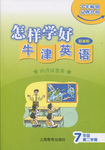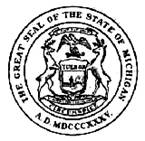题目内容
阅读理解。
Photographs are everywhere. They decorate (装饰) the walls of homes and are used in stores for sales
of different goods. The news is filled with pictures of fires, floods, and special events. Photos record the
beauties of nature. They can also bring things close that are far away. Through photos, people can see wild
animals, cities in foreign lands, and even the stars in outer space. Photos also tell stories.
Reporting the news through photos is called photojournalism. At times photojournalists tell their stories
through a single picture. At other times, they use a group of pictures to tell a story. Each picture is like a
chapter in a book, which can do more than record the facts. It can also be a strong force for social change.
Jacob Riis was among the first photojournalists. He took pictures of parts of New York City where the
poor lived. Riis believed that poverty (贫穷) caused crime, and he used photos to help him prove his point.
A few years later, the photos of small children working in factories by Lewis Hine shocked the public. Hine's
pictures helped bring about laws to protect such children.
Hundreds of pictures may have to be taken in order to get one or two really good photos. It takes science
to have the photo come out clearly and art to make a photo that has a good design and expresses feeling.
Photojournalists make an actual record of what they see. A photo, however, can be both a work of art and an
actual record. It can record an important event as a beautiful or exciting picture.
As historical and artistic documents (文献), photos can become more important over time. Today
photojournalists still have their pictures appear in newspapers and magazines. They also publish (发表) them
in books and on the Internet.
of different goods. The news is filled with pictures of fires, floods, and special events. Photos record the
beauties of nature. They can also bring things close that are far away. Through photos, people can see wild
animals, cities in foreign lands, and even the stars in outer space. Photos also tell stories.
Reporting the news through photos is called photojournalism. At times photojournalists tell their stories
through a single picture. At other times, they use a group of pictures to tell a story. Each picture is like a
chapter in a book, which can do more than record the facts. It can also be a strong force for social change.
Jacob Riis was among the first photojournalists. He took pictures of parts of New York City where the
poor lived. Riis believed that poverty (贫穷) caused crime, and he used photos to help him prove his point.
A few years later, the photos of small children working in factories by Lewis Hine shocked the public. Hine's
pictures helped bring about laws to protect such children.
Hundreds of pictures may have to be taken in order to get one or two really good photos. It takes science
to have the photo come out clearly and art to make a photo that has a good design and expresses feeling.
Photojournalists make an actual record of what they see. A photo, however, can be both a work of art and an
actual record. It can record an important event as a beautiful or exciting picture.
As historical and artistic documents (文献), photos can become more important over time. Today
photojournalists still have their pictures appear in newspapers and magazines. They also publish (发表) them
in books and on the Internet.
1. The underlined word "They" in the first paragraph refers to _____.
A. beauties
B. photos
C. goods
D. events
B. photos
C. goods
D. events
2. The photos of the small children by Hine show us that photos _____.
A. are also works of art
B. are popular ways of reporting news
C. often shock the public
D. can serve as a force for social change
B. are popular ways of reporting news
C. often shock the public
D. can serve as a force for social change
3. What can we learn from the passage?
A. News with pictures is encouraging.
B. Photos help people improve
C. News photos mean history in a sense.
D. People prefer reading news with pictures.
B. Photos help people improve
C. News photos mean history in a sense.
D. People prefer reading news with pictures.
4. The text is mainly about _____.
A. telling the story through picture
B. decorating the walls of homes
C. publishing historical papers
D. expressing feeling through pictures
B. decorating the walls of homes
C. publishing historical papers
D. expressing feeling through pictures
1-4: BDCA

练习册系列答案
 怎样学好牛津英语系列答案
怎样学好牛津英语系列答案 导学教程高中新课标系列答案
导学教程高中新课标系列答案
相关题目
 As a girl, she was inspired by the work of great scientists: she read the story of the cure of malaria in the Panama Canal; she also read a biography of Madame Curie.These accounts inspired her to pursue a career in scientific research.After high school, she worked for the Michigan Department of Health, where she did research in biology and microbiology.There, her colleagues saw her talent and encouraged her to pursue science as a career.She went on to earn a bachelor’s degree from Michigan State University in 1948 in medical technology.
As a girl, she was inspired by the work of great scientists: she read the story of the cure of malaria in the Panama Canal; she also read a biography of Madame Curie.These accounts inspired her to pursue a career in scientific research.After high school, she worked for the Michigan Department of Health, where she did research in biology and microbiology.There, her colleagues saw her talent and encouraged her to pursue science as a career.She went on to earn a bachelor’s degree from Michigan State University in 1948 in medical technology.